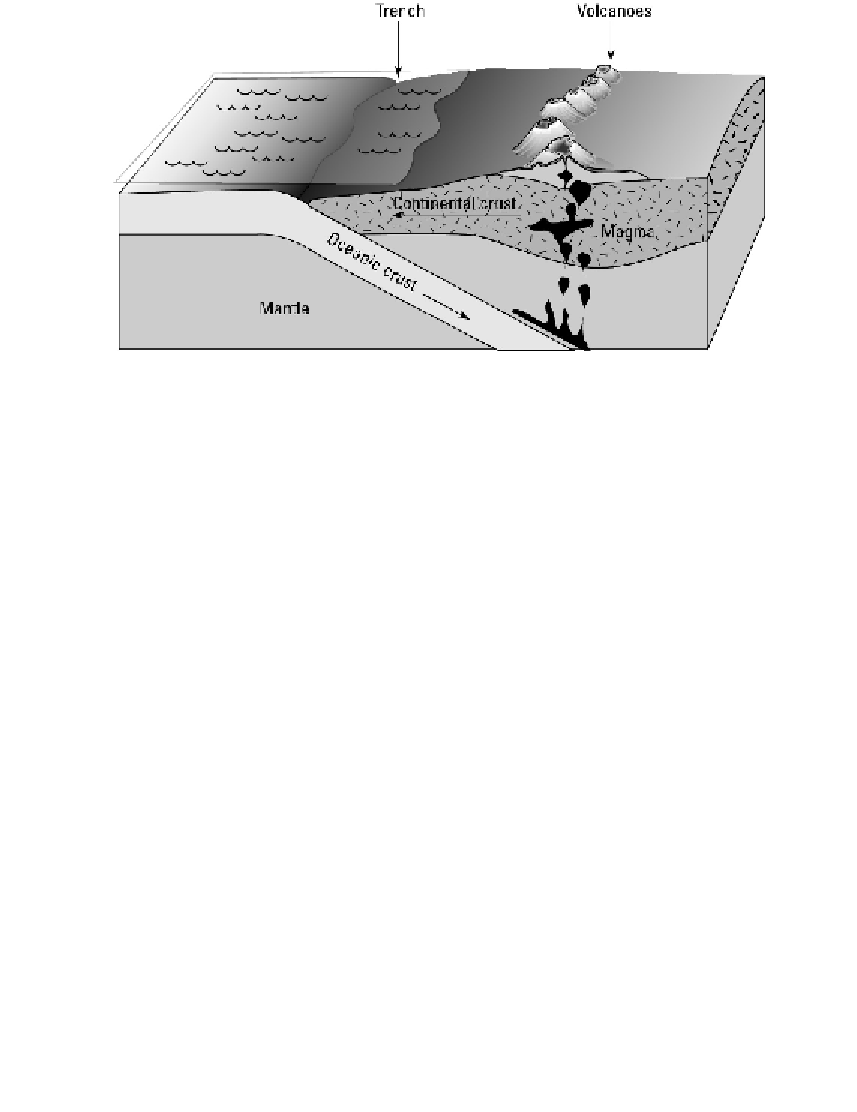Geology Reference
In-Depth Information
Volcanic hot spots
Not all volcanoes result from subduction. Some form when magma is created beneath a
crustal plate due to heat released during the cooling phase of the mantle convection
cycle. Remember the mantle plumes I illustrated earlier in the chapter? Sometimes these
plumes of heated mantle rock move up from the earth's core toward the crust, erupting
in the middle of a crustal plate. These points of eruption are called
volcanic hot spots.
When the mantle plumes reach the crust, they cool, which means some of the heat must
be transferred to the crustal rocks. The added heat in the crust raises the temperature
enough to melt some minerals from the deep crustal rocks into magma. This is partial
melting, similar to what occurs at subduction zones. However, there is one big differen-
ce: The minerals that melt deep in the crust are different minerals than those found (and
melted) in a subducting crust. Scientists know this because the
basalt
(the rock formed
when erupted magma, or
lava,
cools) at hot spots has less silica than basalt from vol-
canic arcs. The minerals in hot spot magmas are thought to originate deep in the mantle
and have not been through repeated cycles of partial melting and concentration of ele-
ments the way rocks along subducted plate edges have been.
Mantle plume hot spots seem to stay in one place in the mantle as crustal plates move
across them. The result is a chain of volcanoes, such as the Hawaiian Islands shown in
Figure 10-4. As the Pacific Plate moves across the Hawaiian hotspot, the older volcanic
islands (no longer erupting magma) move with the plate toward the northwest, while a
new volcanic island is formed to the southeast.
This process can also occur beneath continental crust plates. The geologic features of
Yellowstone National Park in Wyoming (such as hot springs, which I describe in Chapter
12) are the result of a hot spot beneath the North American Plate. Geologists have recog-

